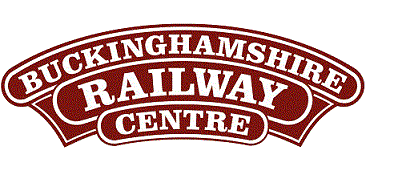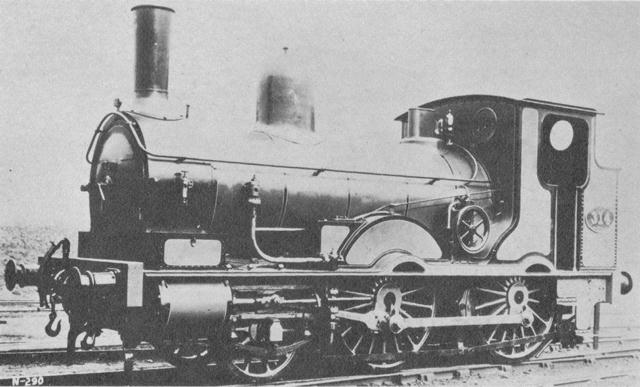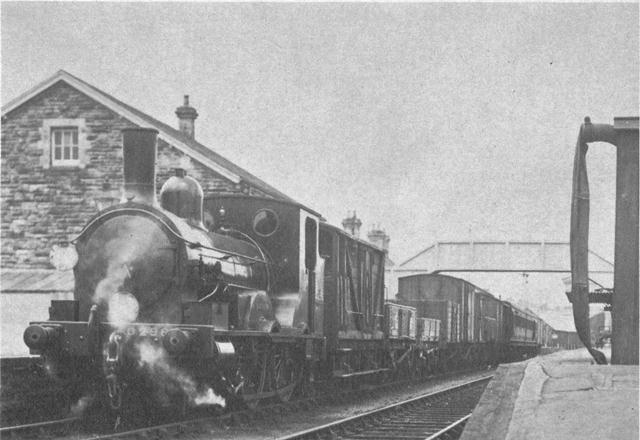
BRC Website Home
Quainton Virtual Stockbook
Rebuilt LSWR 0298 Class 2-4-0 Well Tank No. 0314
Miscellaneous Quainton Publications
The Centenary of the Beattie Well Tank at Quainton

BRC Website Home
Quainton Virtual Stockbook
Rebuilt LSWR 0298 Class 2-4-0 Well Tank No. 0314
Miscellaneous Quainton Publications
The Centenary of the Beattie Well Tank at Quainton
What Happened to the Well Tanks?

Photo: |
|
This picture of our locomotive, No. 314, shows a marked change in appearance from the original engines as built, and we should consider, briefly, what happened to the 85 strong class of Standard well tanks. At the death of Joseph Beattie in 1871, his son William succeeded him and the later batches of well tanks were constructed by William until 1875. Two years later William departed from Nine Elms and he was replaced by that eminent locomotive engineer, William Adams. Mr Adams soon built larger tank engines to his own design for suburban traffic and by the mid eighties all the Beattie well tanks had been displaced to country depots. One of their drawbacks in the country was the limited water capacity of 500 to 600 gallons so Mr. Adams rebuilt 31 of the class as tender engines, normal cabs and, with exception of eight locomotives, these rebuilds had new boilers carrying domes on the centre ring and smokeboxes with stovepipe chimneys. The change in appearance was striking. Mr. Adams also reboilered six of the tank engines with domed boilers of similar external profile and with enclosed cabs. Our No. 314 was dealt with in 1889 and served at Exeter with the other five engines working the Exmouth branch, doing some banking on the hill from St. Davids to Queen Street and appearing on the branches to Seaton, Chard, Sidmouth and on the Taw Valley line to Barnstaple. The tender engines and the unrebuilt tank engines were withdrawn rapidly in the eighteen nineties. Three of the six reboilered tank engines were also scrapped. Only Nos 298, 314 and 329 survived and this was because they proved themselves almost indispensable! It was the short flexible wheelbase and the light weight of these three well tanks which saved them for a further sixty four years of service compared with the eighty two other engines of the class all withdrawn by July 1899! The story of this 'miracle' makes fascinating reading. In May 1893, No. 248, one of the unrebuilt engines was sent by sea from Southampton Docks to Cornwall to work on the remote and isolated section of the L.S.W.R., the Bodmin and Wadebridge Railway. Two years later it was replaced by No. 298 but this engine did not travel aboard ship. In fact it was one of the first to travel over the newly completed North Cornwall line which was opened from Halwill to connect Wadebridge with the parent system on 1st June 1895. Shortly after 298 had relieved 248 it was joined by Nos 314 and 329 and for the last five years of the 19th century the trio proved themselves eminently suitable for working the china clay traffic over the Wenford and Ruthern Bridge branches of the B & W.R. Nevertheless, in 1900, Mr. Dugald Drummond, the Mechanical Engineer decided that their age and mechanical condition warranted their withdrawal from service and their replacement by more modern locomotives. An inspector was sent down to Cornwall to carry out trials but he was so impressed by the performance of the Beattie well tanks that he returned to London and persuaded Drummond to give the three 2-4-0Ts a new lease of life. This set the seal for the survival of our Centenarian! All three engines had been given the '0' prefix to signify their numbers were duplicated by new locomotives built between 1899 and 1901. Thus 0298 and 0329 were given extensive overhauls at Nine Elms works at the end of 1901 and 0314 was similarly treated early in 1902. |

Photo: |
|
Reference: |
|
Notes: |
Text © Quainton Railway Society / Photographs © Quainton Railway Society or referenced photographer
Email Webmaster
Page Updated: 15 October 2017